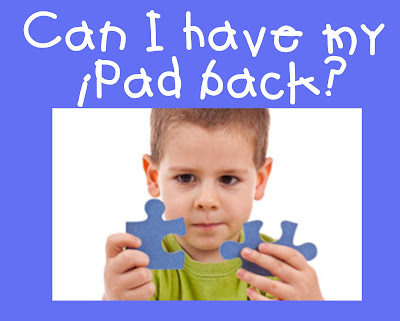


Do your students come to Pre-K or Kindergarten already knowing how to put together a basic puzzle? Many of my students need help mastering this problem solving skill. I don’t know why, but it always surprises me each year when children need lessons on how to put together a puzzle. I just assume that their parents have taught them this at home, but there are always a BUNCH of them that really have no idea! I’m sure that many children don’t have these ordinary puzzles at home. Perhaps some children have a few puzzles, but their parents never taught them how to best use them, or maybe it’s both? And it could also be that their parents tried to teach them, and the children either didn’t understand it or weren’t developmentally ready to really learn and remember it.

And maybe we have all gone “so digital” that children seem to instinctively know how to play hand held computer games (such as on an iPad), but ordinary old puzzles? ‘Fraid not! I guess that’s a digital native for you, isn’t it? NONE of my students had ANY trouble using the iPads last year! And it’s interesting to note that most of them say that their parents don’t have one at home for them to play with either!
Teaching Children to Put Together a Puzzle
So, I had to back up and teach them how to put together a basic puzzle, step by step. These were the steps that I came up with. If you have come across a better way, please let me know!
First of all, let me state that I not ALL of our puzzles have numbers on the backs of them as the one in the picture does. We only did that for the most difficult ones that the children consistently could not put together on their own, because they were leaving them unfinished for the teacher to complete at the end of the day. Since this is not my idea of the best way to spend my prep work, I went ahead and put the number clues on the backs of the pieces for a few of the hardest ones.
Now for parents at home or for teachers of very young children that would like to put the more difficult puzzles together, adding the numbers is a great way to put some “training wheels” on the puzzle! Plus, it can also help give the children some practice in recognizing those numerals. So, think of it as a baby step on the way to putting a puzzle together on your own. I wouldn’t do it for every puzzle, but I would do it for some of the trickier ones that seem to always be a problem for many of the children in a classroom.
Step 1:
Have your kids take a careful look at the completed puzzle before dumping it out. Once it’s dumped out, you can’t go back! Is there any certain part of the picture or piece that you will want to start with?
(In my class, we also have a rule that you can only dump out ONE puzzle at a time. You must put it back together and put it away before getting a new one. No one is allowed to give up on a puzzle, walk away from it, and dump out a new one!)

Step 2:
Then dump the puzzle out and take the puzzle apart, turning the pieces over to the printed side. If there is any print on them, turn the print right side up.

Step 3:
Teach kids to first look for corner pieces and any obvious matches, such as the piece I marked with a number one below. Corners usually have straight edges so they are easier to spot.
Piece number 2 below has an edge, and then piece number three is pretty obvious because of the face.

Step 4:
Look for pieces with long straight sides that might belong on the outside edges and put them in next. The piece below was also a corner type of piece and was easy to find, even without the numbering.

Step 5:
Match the rest of the bottom, corner, and outside edges. (At least, it’s usually easiest to fill in all of the corners and outside edges first, and this puzzle is no exception.) The bottom pieces were the easiest thing to match up next on this puzzle, especially considering the picture clue of the feet.

Step 6:
Put in the last pieces, using the pictures to help you. If your child is missing a piece, have them stand up! The kids are almost ALWAYS sitting on it!

In fact, my 22 year old daughter and a friend recently put together a 500 piece puzzle in our living room, and were missing the last piece. I advised them to stand up, because I was SURE that one of them was sitting on it, since kindergartners are always found to be sitting on missing puzzle pieces. Guess what? Her friend WAS sitting on it! We all laughed our heads off- particularly since they had both been searching the puzzle area for about five minutes! 
-Heidi
P.S. Check this out! My Number Jumble DVD now has numbers all the way to 30!! 
———————————-
Follow me! Did you enjoy this post? Do me a favor and share it with your friends! And follow this blog by signing up email updates, or follow on Bloglovin’, or follow me on TPT! I’m also on Pinterest, Facebook, Twitter, Instagram, Google+ and YouTube, too! Don’t forget to sign up for our email newsletter (on the left sidebar) for special deals and promo codes that you won’t find out about anywhere else.
















